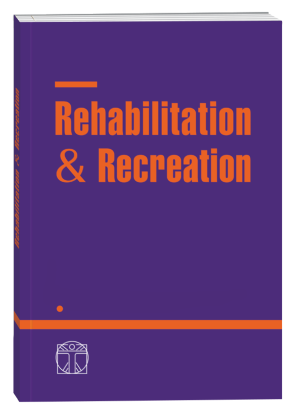MECHANISMS OF IMPROVING MEMORY AND COGNITIVE FUNCTIONS OF ELDERLY PERSONS UNDER THE INFLUENCE OF PHYSICAL EXERCISES
DOI:
https://doi.org/10.32782/2522-1795.2023.14.13Keywords:
physical culture, memory, myokines, neurogenesis, elderly people, cognitive functions.Abstract
More than 50 million people worldwide suffer from memory impairment. It is known that people who regularly do sports are able to keep a clear mind and a good memory until old age. Regular moderate physical activity reduces the risk of developing hypertension, diabetes and stroke which are diseases that significantly impair brain function. During training, brain cells are additionally supplied with oxygen, thanks to which the brain’s work becomes more productive and the new neural connections are formed in the brain. The aim of the work was to generalize current data and findings regarding the impact of physical activity on the state of cognitive functions and memory in old age. Research methods. The work uses the methods of structural and logical analysis and the bibliosemantic research method. The bibliosemantic method was used to clarify the state of study of dementia problems and the impact of physical exertion on cognitive functions. The method of structural-logical analysis made it possible to identify, logically structure and establish connections between the implementation of a unified medical information system and the result of work with patients with cognitive age-related changes during moderate physical exertion. Regular physical activity improves cerebral blood circulation, especially in the hippocampus, physical exercises increase the integrity of the grey matter of the brain and the volume of brain regions. An important role is given to strengthening the function of mitochondria during contraction of skeletal muscles. Regular exercise can prevent age-related decline in mitochondrial function. During contraction, skeletal muscles release proteins known as myokines into the bloodstream, which are involved in maintaining the plasticity of the hippocampus and long-term memory. Insulin-like growth factor plays a significant role. An important mechanism of the influence of physical exercises on memory preservation is also the system of biological lipids, which significantly modulates the functions of the immune, endocrine, and nervous systems. Conclusion. Current research has shown that frequent moderate aerobic exercise is associated with improved neurocognitive functions in the elderly. Improvements in cerebral blood flow, neurotrophic factors, mitochondrial biogenesis, and the release of multiple signaling molecules, including myokines and adipokines, in response to regular exercise may be involved in the neuroprotective mechanisms of exercise.
References
Horoshko, O. I., Horoshko, A., Bilyuga, S., & Horoshko, V. (2021). Theoretical and methodological bases of the study of the impact of digital economy on world policy in 21 century. Technological Forecasting and Social Change, 166, 120640.
Zhidong, C., Wang, X., Yin, J., Song, D., & Chen, Z. (2021). Effects of physical exercise on working memory in older adults: a systematic and meta-analytic review. European Review of Aging and Physical Activity, 18(1), 1–15.
Ku, Y. (2019). Cognitive and neural mechanisms underlying working memory. Sheng li xue bao: [Acta Physiologica Sinica], 71(1), 173–185.
Lewis, K., Livsey, L., Naughton, R. J., & Burton, K. (2020). Exercise and dementia: what should we be recommending? Quality in Ageing and Older Adults, 21(2), 109–127.
Li, B., Liang, F., Ding, X., Yan, Q., Zhao, Y., Zhang, X., ... & Xu, B. (2019). Interval and continuous exercise overcome memory deficits related to β-Amyloid accumulation through modulating mitochondrial dynamics. Behavioural brain research, 376, 112171.
Clark, I. A., Callaghan, M. F., Weiskopf, N., & Maguire, E. A. (2021). The relationship between hippocampal-dependent task performance and hippocampal grey matter myelination and iron content. Brain and Neuroscience Advances, 5, 23982128211011923.
Haeger, A., Costa, A. S., Schulz, J. B., & Reetz, K. (2019). Cerebral changes improved by physical activity during cognitive decline: a systematic review on MRI studies. NeuroImage: Clinical, 23, 101933.
Nicola, R., & Okun, E. (2021). Adult hippocampal neurogenesis: One lactate to rule them all. Neuromolecular Medicine, 23(4), 445–448.
Burtscher, J., Millet, G. P., Place, N., Kayser, B., & Zanou, N. (2021). The muscle-brain axis and neurodegenerative diseases: the key role of mitochondria in exercise-induced neuroprotection. International Journal of Molecular Sciences, 22(12), 6479.
Flockhart, M., Nilsson, L. C., Tais, S., Ekblom, B., Apró, W., & Larsen, F. J. (2021). Excessive exercise training causes mitochondrial functional impairment and decreases glucose tolerance in healthy volunteers. Cell metabolism, 33(5), 957–970.
Kirk, B., Feehan, J., Lombardi, G., & Duque, G. (2020). Muscle, bone, and fat crosstalk: the biological role of myokines, osteokines, and adipokines. Current Osteoporosis Reports, 18(4), 388–400.
Downloads
Published
How to Cite
Issue
Section
License

This work is licensed under a Creative Commons Attribution-NonCommercial-NoDerivatives 4.0 International License.











